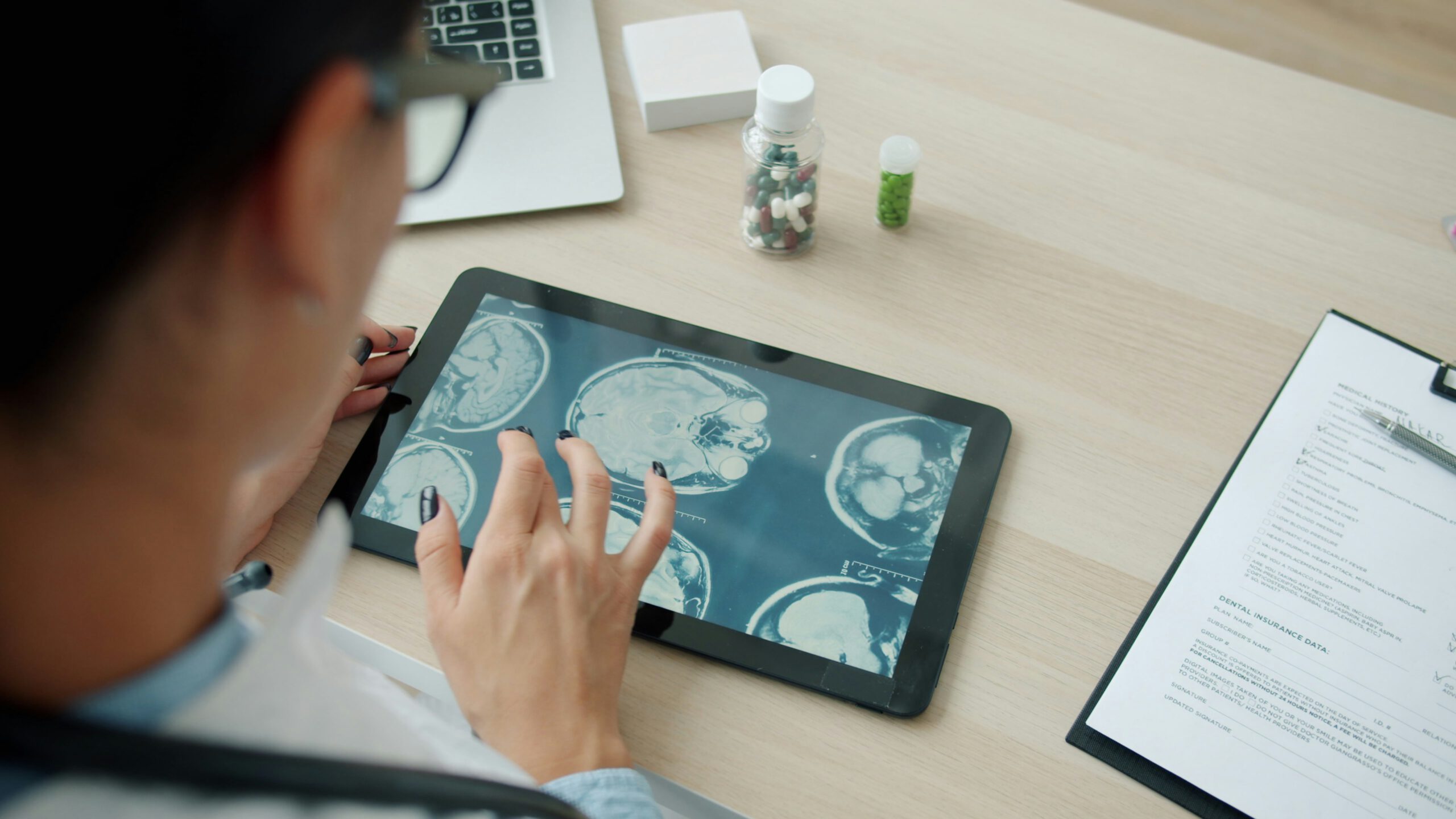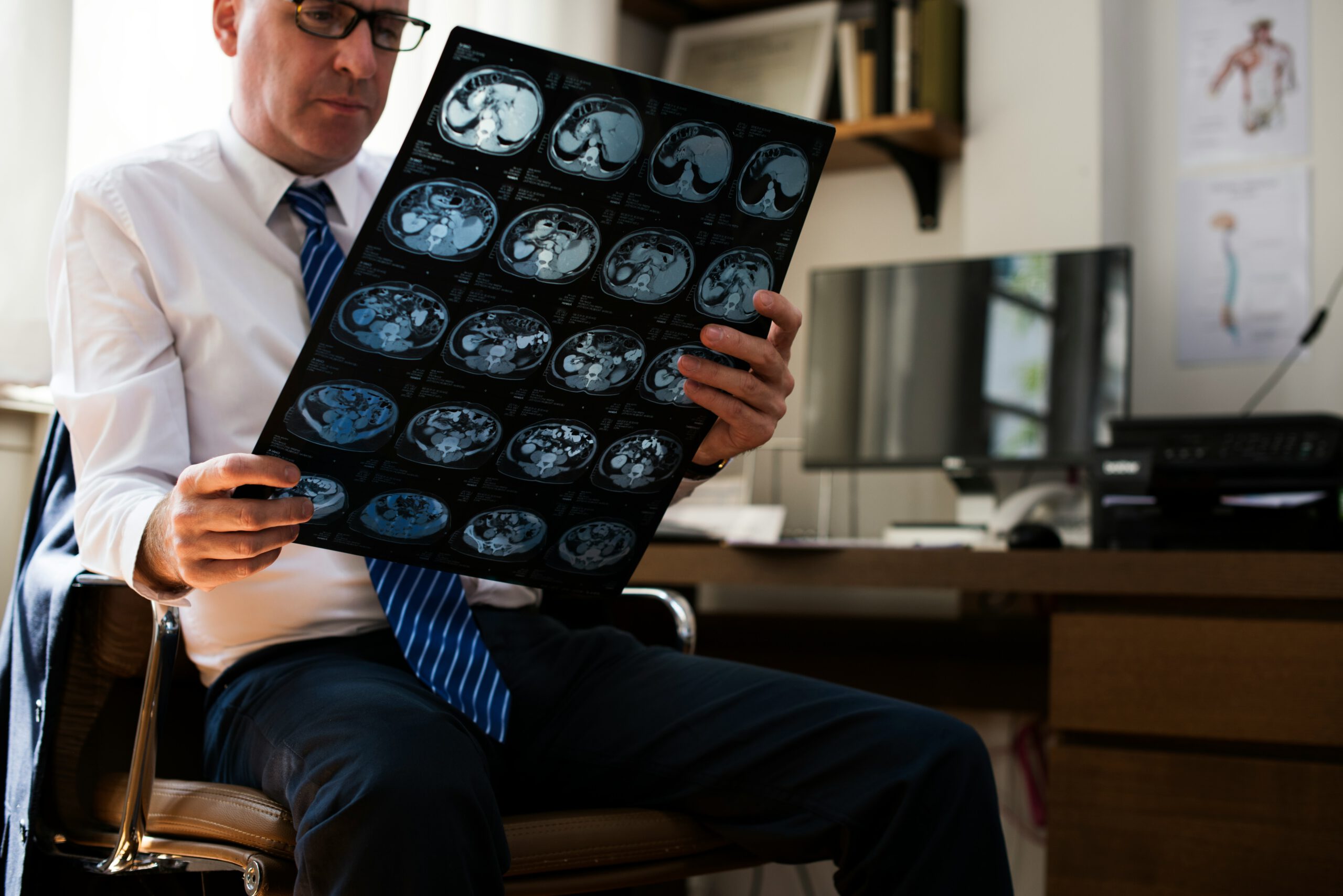Understanding why Transcranial Magnetic Stimulation provides long-term improvement begins with one key concept. Neuroplasticity shapes how the brain learns, adapts, and recovers, which is why neuroplasticity TMS results continue to gain so much attention across the field of interventional psychiatry. When providers understand how stimulation promotes new neural connections, they can better educate patients about the long-term value of treatment and the science behind durable symptom relief. TMS is unique because it works with the brain’s natural capacity to change. Instead of masking symptoms or relying on daily medication patterns, TMS encourages new activity in regions disrupted by depression or other conditions. These changes often continue to strengthen over time, which is why patients frequently notice improvement weeks or months after completing acute treatment. Neuroplasticity is the mechanism that makes these lasting outcomes possible. How Neuroplasticity Supports Brain Health Neuroplasticity refers to the brain’s ability to reorganize itself by forming new neural pathways. This process allows individuals to adapt to challenges, learn new skills, and recover from disruptions in typical function. When stress, trauma, or chronic mood symptoms impact neural circuits, these pathways can weaken. TMS introduces targeted stimulation to support healthier patterns of activity. During a course of TMS, magnetic pulses activate underactive regions of the brain and promote rhythmic firing. Over time, the brain responds by reinforcing these improved patterns. This is why so many patients find that the benefits of TMS extend beyond the treatment window. Instead of relying on temporary symptom masking, neuroplasticity helps create internal change that remains stable. Why Neuroplasticity Makes TMS Results Last One of the main advantages of TMS is its ability to create long-term improvement. Traditional treatments often lose effectiveness when doses change or when life stressors intensify. In contrast, neuroplasticity TMS results reflect the brain’s ability to maintain healthier patterns independently. Lasting improvement occurs because the brain does not simply react to stimulation. It learns from it. The neural pathways strengthened during treatment continue to solidify, much like practicing a new skill. Over time, this creates internal resilience, which is why some individuals experience benefits that last for years. Here are some reasons why neuroplasticity supports lasting TMS outcomes. • TMS strengthens weakened neural pathways• Improved activity patterns continue to develop after acute treatment• The brain becomes more efficient at regulating mood• Patients may experience continued progress even after sessions end• Neuroplasticity reduces reliance on medication-only treatment strategies These combined effects help explain the increasing number of patients who report durable improvement long after completing treatment. How Neuroplasticity TMS Results Guide Clinical Decision Making Understanding how neuroplasticity works helps providers customize protocols, educate patients, and design maintenance strategies. Neuroplasticity TMS results inform how clinicians measure progress and communicate expectations, especially for individuals who wonder how long benefits may last. Clinicians can use neuroplasticity to guide discussions in several key areas. Setting Expectations Patients appreciate transparency. When clinicians explain that TMS supports the brain’s natural ability to reorganize itself, individuals have a clearer understanding of why results might continue to improve after treatment ends. Supporting Long-Term Care Because neuroplasticity can continue to adapt, some patients benefit from periodic follow-up or maintenance sessions. These sessions reinforce healthier patterns and help sustain long-term stability. Understanding Variability Every brain responds differently. Some patients respond quickly, while others see improvement gradually. Both pathways reflect neuroplastic change and both are valid outcomes. Clinicians who communicate this clearly help patients stay engaged throughout the process. The Connection Between Repetition and Neural Growth TMS treatments are structured with repeated sessions for a reason. The brain needs consistent stimulation to strengthen new pathways. Repetition supports predictable neural responses. Over time, these repeated signals help the brain develop new structural and functional patterns. Just as practicing a new language or physical skill leads to improvement, consistent stimulation helps reinforce brain activity that supports mood regulation. This repetition is central to how TMS works. The more consistently the brain receives stimulation, the more opportunities it has to adapt. This is why protocol adherence is essential for maximizing neuroplasticity. How Providers Can Explain Neuroplasticity to Patients One of the most valuable communication strategies is simplicity. Patients do not need complex explanations to understand why TMS works. What they need is a clear, relatable description of how the brain adapts. Providers can explain neuroplasticity as the brain’s ability to grow stronger in the areas responsible for mood and cognitive balance. TMS supports this growth by adding stimulation in places that need support. Clinicians can use analogies such as rebuilding a muscle or strengthening a pathway. These explanations help patients visualize how their brain is learning to regulate itself more effectively. When patients understand the science behind their treatment, they feel more confident and empowered throughout the process. Final Thoughts: The Long-Term Value of Neuroplasticity Driven TMS Results The long-lasting benefit of TMS is rooted in neuroplasticity. This capacity for growth and adaptation explains why so many individuals continue to experience relief long after finishing treatment. By understanding how neuroplasticity supports these changes, clinicians can guide patients through treatment with confidence and clarity. Neuroplasticity TMS results highlight the unique value of this therapy and reinforce why TMS continues to be a central tool for providers seeking durable outcomes. Learn more about the Blossom TMS Therapy SystemPhone: 833.3BUY.TMS (+1.833.3289.867)Email: Sales@sebersmedical.comAddress: 230 S Broad Street, 17th Floor Philadelphia, PA 19102
Reducing Staff Burnout Through TMS Integration
Staff burnout is one of the most persistent challenges in behavioral health settings. High caseloads, inconsistent schedules, and a growing administrative burden have made it increasingly difficult for clinicians and support teams to maintain energy and effectiveness. Integrating TMS into a structured TMS workflow psychiatry clinic model can help ease these pressures. TMS introduces predictability, balances patient flow, and reduces the emotional overload that often leads to burnout. When implemented strategically, it becomes a stabilizing force in day-to-day operations. Burnout builds gradually. It often starts with overbooked days and ends with overwhelmed teams who are constantly shifting between crisis management, medication adjustments, and documentation. This type of reactive workflow leaves little room for focus, clarity, or meaningful connection with patients. Introducing TMS changes the rhythm. Instead of unpredictable and emotionally heavy appointments, TMS offers consistency, measurable progress, and a structured appointment cadence that supports a healthier clinic environment. Why TMS Fits Naturally Into Clinic Operations TMS is not simply an added service. It becomes a central part of an optimized workflow. Scheduled treatments follow a routine that naturally creates smoother pacing throughout the day. This improves operations not only for psychiatrists but also for technicians, front desk staff, and administrative teams. In a well-designed TMS workflow psychiatry clinic, patient progression becomes easier to monitor and staff expectations become clearer. The result is a more organized clinical ecosystem. Ways TMS Integration Reduces Staff Burnout Predictable Treatment Scheduling TMS follows a consistent daily and weekly structure. This predictability allows clinics to forecast their workload more accurately compared to medication management visits, which can vary due to side effects, crisis needs, or medication changes. Predictability supports: • Smoother daily pacing• Reduced unexpected disruptions• Clearer staffing and task distribution Teams feel more grounded when they know what to expect. Lower Administrative Load Medication management often requires pharmacy communication, side effect follow-ups, and ongoing adjustments. TMS reduces this burden by offering a treatment process that is more standardized and easier to document. When TMS becomes part of the TMS workflow psychiatry clinic, teams benefit from: • Fewer urgent patient messages• Simplified documentation• Less symptom-related triage• Clear treatment milestones Administrative stability plays a major role in lowering burnout across all roles. Balanced Caseload Distribution TMS enables clinics to distribute responsibilities across psychiatrists, TMS technicians, and administrative staff. This reduces the pressure on psychiatrists to manage every aspect of patient care. Balanced caseloads support: • Lower clinician fatigue• Increased capacity for evaluations• Better coverage for patient needs• Higher productivity and smoother operations When roles are balanced, teams operate with less strain. Better Patient Stability As patients respond positively to TMS, they require fewer urgent interventions. This improves the emotional climate of the clinic and reduces the intensity of daily work. Staff feel more encouraged and less drained when treatment plans yield steady improvement. Stronger Team Collaboration TMS naturally encourages communication between staff members. Technicians track progress, psychiatrists guide treatment plans, and administrative staff manage scheduling and flow. This creates a unified approach to care. Strong internal coordination reduces miscommunication, which is a common source of staff frustration. How a TMS Workflow Psychiatry Clinic Strengthens Long-Term Operations A well-integrated TMS workflow psychiatry clinic improves more than scheduling. It supports long-term team wellness, retention, and operational clarity. Staff know what to expect each day, which lowers stress and improves confidence. Predictable treatment patterns make it easier to plan staffing, allocate resources, and manage patient volume. Over time, these improvements create a more resilient clinic that can maintain high-quality care without overwhelming its team. TMS integration gives psychiatry practices the structure needed to operate with steadiness rather than constant urgency. By reducing administrative pressure, balancing workloads, and improving patient flow, TMS helps clinics cultivate a healthier environment for both staff and patients. Reducing burnout is essential for the sustainability of any behavioral health practice. Integrating TMS thoughtfully into your clinic can create a model that supports team wellness and operational strength. A strong TMS workflow psychiatry clinic offers predictable rhythms and measurable outcomes that help teams thrive instead of struggle. Explore the Blossom TMS Therapy SystemPhone: 833.3BUY.TMS (+1.833.3289.867)Email: Sales@sebersmedical.comAddress: 230 S Broad Street, 17th Floor Philadelphia, PA 19102
How to Educate Patients About TMS Without Overwhelming Them | Patient Education TMS
Helping patients understand Transcranial Magnetic Stimulation is one of the most important parts of any consultation, yet it is also where many practices unintentionally overwhelm people with unfamiliar terminology and complex explanations. Effective patient education TMS strategies focus on clarity, simplicity, and supportive communication. When clinicians translate the science into approachable language, patients feel more confident and more willing to move forward with treatment. This article outlines practical, patient-centered ways to explain TMS so the information feels digestible and actionable. Start With What the Patient Already Understands Most patients begin with limited knowledge of brain stimulation therapies. Instead of introducing technical details right away, start with concepts they already recognize. Compare TMS to other approaches like psychotherapy or medication and explain how each method works differently. For example, traditional treatments may support mental health through behavioral work or biochemistry, while TMS uses magnetic pulses to activate specific areas of the brain involved in mood regulation. Framing the explanation around familiar ideas builds trust and provides a foundation for deeper understanding. When new information connects to something recognizable, patient education TMS becomes much easier for patients to follow. Use Clear, Simple Language Clarity is essential in patient communication. Complex medical terms can create confusion and discourage patients from asking questions. Replace advanced terminology with everyday language that keeps accuracy intact. For example, instead of describing neuromodulation, describe stimulating an area of the brain linked to mood. Instead of using the term motor threshold, explain that clinicians determine the best treatment setting for the patient’s individual brain. Instead of describing pulses per second, refer to the gentle tapping sensation patients normally feel on the scalp. Patients appreciate direct explanations that help them understand exactly what to expect. The goal is not to remove science but to remove barriers that prevent patients from understanding it. Use Visuals to Reinforce Understanding Visual aids can transform a technical explanation into something patients grasp quickly. A diagram of the brain, coil placement images, or a short animation showing how magnetic pulses work can turn abstract concepts into a concrete process. Patients benefit from seeing: • where the coil sits• what the equipment looks like• what the tapping sensation corresponds to• how long a session typically lasts Visual learning supports retention and helps patients form a clear mental picture of what treatment will involve. Address Sensations and Comfort Early Patients often want to know what TMS feels like before they want to understand how it works. Addressing sensations early improves comfort and reduces anxiety. Many people describe the feeling as a tapping or pulsing on the scalp or slight movement in facial muscles. Most patients adjust quickly, and technicians can make modifications to improve comfort. Clear explanations of physical sensations are one of the most important parts of patient education TMS because they help patients feel prepared and supported. Break Down the Treatment Process Into Clear Stages A full course of TMS treatment can seem overwhelming if described all at once. Breaking the process into simple stages helps patients understand what commitment looks like. Explain that: • the first appointment includes mapping and setting treatment levels• daily sessions are relatively short• patients can immediately return to their normal day• progress usually builds gradually over time A staged explanation allows patients to visualize the process step by step rather than feeling buried under information. Invite Questions and Validate Feelings Patients often hesitate to ask questions because they fear interrupting the clinician or revealing confusion. Encourage them to pause you anytime they want clarification. Normalizing questions creates room for real dialogue and ensures misunderstandings do not go unaddressed. Many patients also need emotional validation. They may feel hopeful, uncertain, nervous, or curious. Acknowledging these emotions builds rapport and strengthens your patient education TMS approach by keeping the interaction warm and supportive. Reinforce Learning With a Simple Summary At the end of the consultation, summarizing key points helps patients feel grounded in what they learned. Summaries highlight the essentials while giving patients something easier to remember. Offering printed or digital materials reinforces understanding and helps the patient revisit the information later. A recap also helps patients explain the treatment accurately to family members involved in decision making, which supports their comfort and confidence. Closing Thoughts The strongest patient education TMS strategies focus on clarity, simplicity, and emotional support. When clinicians present information in manageable steps, use visuals, clarify sensations, and encourage questions, patients feel more confident and more equipped to make an informed decision. A supportive educational experience creates trust and leads to better engagement with treatment. For clinics seeking a dependable and patient centered device, explore the Blossom TMS Therapy System. Phone: 833.3BUY.TMS (+1.833.3289.867)Email: Sales@sebersmedical.comAddress: 230 S Broad Street, 17th Floor Philadelphia, PA 19102
Efficient Psychiatry: How TMS Streamlines Patient Care with Efficient TMS Protocols
Psychiatrists today face growing pressure to deliver high quality care while managing large caseloads, follow up demands, and extensive medication adjustments. Many clinics want a more efficient model that supports better outcomes without overwhelming their teams. This is where efficient TMS protocols have become a transformative tool. They reduce medication trial cycles, improve scheduling flow, and create a more structured, predictable patient experience. TMS has long been valued for its safety and effectiveness. What practices are now recognizing is its operational strength. Clinics that adopt efficient TMS protocols report fewer urgent medication issues, fewer emergency appointments, and a smoother rhythm across the week. This elevates both patient care and internal workflow. The Operational Value of Efficient TMS Protocols Medication based care often requires continuous monitoring, follow ups, and complex adjustments. Efficient TMS protocols simplify this by offering a clear, evidence based pathway for early intervention. This shortens the time patients spend cycling through medications that may not work for them and provides a structured timeline for measurable progress. From a workflow standpoint, TMS is inherently predictable. Each session follows a set duration and cadence, giving clinics the stability they need to plan staffing and manage volume. Here are key efficiencies clinics experience when introducing TMS earlier in the treatment process: • Fewer emergency appointments caused by medication side effects• Reduced administrative work related to prescription monitoring• More predictable weekly schedules• Improved patient stability and fewer setbacks• Higher completion rates due to structured treatment timelines These benefits support both clinical excellence and operational sustainability. How Efficient TMS Protocols Reduce Medication Overload Many psychiatric practices spend a significant amount of time managing medication adjustments. This includes tracking side effects, managing patient distress, scheduling urgent visits, and communicating with pharmacies. These tasks add up and often create an unpredictable clinical environment. Efficient TMS protocols help break the cycle of prolonged medication trials. By introducing TMS sooner for patients who meet criteria, clinicians can reduce the number of switches and dosage changes required. Patients often stabilize more reliably with TMS, which lessens the need for rapid follow ups or last minute schedule disruptions. Clinicians appreciate having a standardized, research supported pathway that minimizes guesswork. This leads to clearer decision making and more confident care planning. Why Efficient TMS Protocols Improve Scheduling Flow Scheduling flow is one of the biggest operational challenges in psychiatry. Medication related issues can create cancellations, rescheduled visits, and unexpected appointment needs. This disrupts the calendar and increases staff workload. Integrating efficient TMS protocols helps restore predictability. TMS treatments occur at consistent times each day, which gives clinics a steady, manageable rhythm. Sessions are quick, structured, and repeated daily, making it easier to forecast patient volume and staff needs. Efficient TMS protocols also reduce congestion in the schedule. When fewer patients require frequent medication check ins, more appointment slots open for new intakes and essential follow ups. Clinics that adopt TMS earlier often report: • More balanced daily schedules• Fewer last minute cancellations• Easier staffing coordination• Higher patient satisfaction due to predictable treatment cadence This consistency strengthens the overall patient journey and supports long term clinic growth. Enhancing the Patient Experience Patients appreciate the clarity and structure that TMS provides. Instead of waiting weeks to see if a medication will work, they receive daily care, progress tracking, and a predictable timeline. Efficient TMS protocols add even more clarity by outlining exactly what patients can expect in terms of treatment duration, goals, and next steps. This helps patients feel more supported, more engaged, and more confident in the treatment plan. A positive experience leads to higher completion rates and more referrals from satisfied patients. The Future of Psychiatric Efficiency Psychiatry is evolving toward treatment models that value both clinical effectiveness and operational sustainability. TMS is uniquely positioned to meet these needs. Practices that adopt efficient TMS protocols experience smoother workflows, improved patient outcomes, and a more stable business foundation. If your clinic is ready to reduce medication overload, enhance patient care, and elevate internal efficiency, efficient TMS protocols offer a clear and proven path forward. Learn more about the Blossom TMS Therapy System here:https://sebersmedical.com/blossom-tms Phone: +1.833.3289.867Email: Sales@sebersmedical.comAddress: 230 S Broad Street, 17th Floor Philadelphia, PA 19102
Why TMS Remains Underused in Psychiatry and How To Bridge The Gap: Understanding TMS Adoption In Psychiatry
Transcranial Magnetic Stimulation continues to prove its value for patients who have not achieved meaningful results with medication alone. Yet TMS adoption in psychiatry remains significantly lower than the clinical results and patient outcomes suggest. Understanding why this gap exists helps clinics expand access, improve results, and deliver stronger long term care. Bridging the divide starts with recognizing the barriers that keep TMS from becoming a more routine option in treatment planning. Although TMS is widely recognized in the clinical community, many patients never receive information about it. Misconceptions about complexity, uncertainty about candidacy, and minimal exposure during training all contribute to hesitation. As a result, TMS is often introduced later in treatment than necessary, limiting the number of patients who can benefit. A Proven Treatment Still Not Fully Integrated TMS consistently shows strong response and remission rates for patients with depression. The treatment is predictable, well tolerated, and supported by robust real world outcomes. Even with these strengths, many clinicians feel overwhelmed by the idea of adding a new service to an already busy practice. Administrative pressure, scheduling demands, and unfamiliarity can make TMS feel distant rather than accessible. Some clinicians continue to view TMS as something reserved for only the most difficult cases. This slows widespread adoption and reduces the number of patients who may recover sooner with a non medication approach. Recognizing the obstacles allows clinics to move from hesitation to confident use. Barriers Slowing TMS Adoption In Psychiatry 1. Limited Exposure During Residency Psychiatry residents gain extensive training in psychotherapy and medication management but often have inconsistent exposure to interventional psychiatry. Many programs do not include structured hands on TMS rotations. Without supervised experience, clinicians may feel unsure about how TMS fits into everyday practice. Increased access to training helps remove uncertainty and supports stronger clinical decision making. 2. Misunderstanding Operational Needs Some assume that TMS requires large teams, complicated technical skills, or major workflow changes. Modern TMS systems are intentionally designed to simplify operations and support reliable daily use. Technician training is efficient, scheduling is manageable, and treatment sessions follow a consistent rhythm. When practices learn how streamlined the process can be, they often recognize that the barriers were smaller than expected. 3. Confusion About Patient Eligibility A common misconception is that TMS is only for patients who have failed many antidepressants. Current clinical standards support the use of TMS earlier when previous medications have not provided adequate benefit or have caused intolerable side effects. This broader understanding of candidacy helps clinicians introduce TMS with confidence. Clear and simple referral guidelines also support consistency across the entire practice. Why Stronger TMS Integration Benefits Patients And Clinics Improving TMS utilization strengthens patient outcomes and supports the direction of modern psychiatry. Many individuals struggle through multiple medication trials that do not deliver meaningful improvement. Introducing TMS earlier offers relief that is both effective and well tolerated. Patients appreciate having a non medication treatment option that does not rely on trial and error. For clinics, offering TMS expands service lines and helps diversify care delivery. It reduces reliance on medication adjustments alone and supports a more comprehensive model that integrates neuroscience based treatments. Practices that offer TMS can provide more complete support for complex depression and can meet patient demand for innovative psychiatric solutions. Practical Steps That Support Wider TMS Use Clinics that want to increase TMS adoption in psychiatry can focus on several practical strategies that build familiarity and improve workflow. Strengthen Clinical Education Regular internal education sessions and case reviews help clinicians see how TMS benefits real patients. Demonstrations and device walkthroughs help reduce hesitation and clarify the treatment process. Consistent exposure builds confidence and allows providers to introduce TMS more naturally in patient conversations. Establish Clear Referral Guidelines Simple criteria make decision making easier. Examples include two unsuccessful antidepressant trials, medication intolerance, or a patient request for a non medication approach. When referral expectations are clear, clinicians move more quickly from identifying a candidate to recommending treatment. Improve Patient Awareness Many patients learn about TMS only when their clinician mentions it. Educational materials, brochures, and short explanations during sessions help patients feel informed and empowered. When patients understand the treatment, they are more comfortable pursuing it. Strong communication supports both adoption and adherence. Choose A System Designed For Reliability And Ease Selecting a high performance TMS system removes uncertainty and supports efficient workflow. Features that ensure consistent coil placement, streamlined protocols, and dependable daily function reduce operational stress. A system built for reliability helps practices maintain confidence throughout every stage of the treatment process. Moving Toward Stronger Utilization In Modern Psychiatry TMS offers an important option for patients who need more than medication. As the field shifts toward neuroscience driven and personalized care, TMS continues to stand out as an essential treatment for depression that does not respond adequately to traditional approaches. By addressing the barriers that slow TMS adoption in psychiatry, clinicians can introduce the treatment earlier, communicate about it more clearly, and help more patients achieve meaningful improvement. Clinics that commit to strengthening TMS adoption in psychiatry elevate patient care and support the ongoing growth of interventional psychiatric treatments. Increased familiarity, structured processes, and clear patient education allow TMS to take its rightful place within modern mental health care. To learn more about a system engineered for reliability and clinical performance, explore the Blossom TMS Therapy System. Phone: 833.3BUY.TMS (+1.833.3289.867)Email: Sales@sebersmedical.comAddress: 230 S Broad Street, 17th Floor Philadelphia, PA 19102
TMS and Psychotherapy: How Combined Treatment Improves Patient Engagement
In modern psychiatry, clinicians are increasingly exploring how TMS and psychotherapy combined can transform outcomes for patients who struggle with depression, anxiety, and other treatment-resistant conditions. Transcranial Magnetic Stimulation (TMS) is a noninvasive, FDA-cleared therapy that stimulates targeted regions of the brain involved in mood regulation. When paired with psychotherapy, this combination offers a unique pathway toward more sustained healing and higher patient engagement. By integrating both biological and psychological approaches, mental health practices can provide a more complete model of care. The result is not only improved symptom relief but also deeper participation and motivation from patients who feel supported on multiple levels of their treatment journey. Why TMS and Psychotherapy Work Better Together While TMS focuses on changing the brain’s electrical activity, psychotherapy focuses on changing thought patterns and behavior. When TMS and psychotherapy combined are used as part of a coordinated care plan, the patient benefits from both sides of the healing process—neurological and emotional. TMS helps “prime” the brain for new learning and adaptation, which makes psychotherapy more effective. For example, a patient receiving TMS may experience increased neural plasticity, meaning their brain becomes more receptive to the insights and coping skills learned in therapy. This synergy allows therapists and psychiatrists to reinforce progress in real time, often leading to faster and more sustainable improvements. The Science Behind Enhanced Engagement Neuroplasticity and Learning TMS enhances neuroplasticity, the brain’s ability to form new neural connections. Psychotherapy relies on this same process to help patients replace maladaptive behaviors with healthier coping mechanisms. When TMS and psychotherapy combined treatments are used together, patients are physiologically more prepared to learn and retain therapeutic strategies. Emotional Regulation Many individuals with depression or anxiety struggle with overactivity or underactivity in specific brain regions. TMS directly modulates these regions, restoring balance. As emotional regulation improves, patients are more capable of engaging in meaningful discussions during therapy sessions. This creates a feedback loop where better emotional stability leads to deeper therapeutic work, which in turn supports long-term recovery. Motivation and Adherence A significant challenge in mental health treatment is maintaining patient engagement over time. Studies suggest that combining TMS with psychotherapy may increase treatment adherence. When patients experience tangible improvements in their mood and cognitive clarity early on, they are more motivated to continue participating actively in therapy. Clinical Benefits for Practices and Patients Broader Treatment Reach Offering TMS and psychotherapy combined enables clinicians to serve a wider range of patients, including those who have not responded to medication alone. It provides an integrative solution that bridges gaps between biological intervention and emotional processing. Stronger Patient Relationships Patients receiving combined treatment often report a greater sense of collaboration with their care team. The process feels more holistic, less mechanical, and more personal. This trust and rapport naturally improve satisfaction and long-term retention within the practice. Improved Outcomes and Measurable Progress Combining TMS with psychotherapy enhances treatment outcomes that are both clinically measurable and personally meaningful. Patients experience improvements in energy, concentration, and motivation, which directly impact their ability to engage with therapeutic assignments and apply new coping skills. Implementing Combined Care in Practice Coordinated Scheduling and Communication For TMS and psychotherapy combined treatment to succeed, coordination between the TMS provider and therapist is essential. Aligning treatment schedules allows for continuous communication on progress and makes it easier to adjust care plans in real time. Educating Patients on the Benefits Clear communication about how TMS and psychotherapy complement one another helps patients feel confident in their care. Explaining that TMS prepares the brain to respond more effectively to therapy encourages participation and sets realistic expectations for outcomes. Measuring Outcomes Over Time Tracking changes in both mood and engagement provides valuable data for clinicians and patients alike. When practices consistently measure improvements across sessions, it reinforces the effectiveness of the combined approach and supports ongoing quality of care. The Future of Collaborative Mental Health Treatment The future of psychiatry lies in integration rather than isolation of treatments. TMS and psychotherapy combined create a balanced model that treats both the brain and the mind, offering a new level of depth and precision in care. As research continues to highlight the synergy between these two methods, more practices are adopting this model to deliver comprehensive results that go beyond symptom management. Conclusion: A Partnership That Elevates Patient Care When TMS and psychotherapy combined treatments are integrated into one care plan, patients experience more meaningful engagement and lasting improvement. This approach brings together the power of brain stimulation and the depth of talk therapy, resulting in better outcomes for both patients and providers. For clinics aiming to offer innovative, evidence-informed solutions, the combination of TMS and psychotherapy is more than just a trend—it’s a strategic advancement in the future of mental health care. Explore the Blossom TMS Therapy SystemLearn more about how SEBERS Medical can help your practice integrate TMS effectively and efficiently.Contact SEBERS MedicalPhone: 833.3BUY.TMS (+1.833.3289.867)Email: Sales@sebersmedical.comAddress: 230 S Broad Street, 17th Floor Philadelphia, PA 19102Learn More About the Blossom TMS Therapy System →
Why TMS Belongs in Every Mental Health Practice
In recent years, integrating TMS into psychiatry practice has moved from being an innovative option to becoming a competitive necessity. Transcranial Magnetic Stimulation (TMS) offers a noninvasive, drug-free approach to treating depression and other mental health conditions. For psychiatry practices, the addition of TMS not only elevates patient outcomes but also strengthens the clinic’s reputation, patient retention, and long-term profitability. As patient demand for alternatives to medication grows, practices that embrace TMS early are better positioned to lead the next era of mental health care. What Is TMS and Why It Matters TMS uses focused magnetic pulses to stimulate specific areas of the brain responsible for mood regulation. Unlike traditional antidepressant medications that can take months to work or cause unwanted side effects, TMS delivers targeted treatment directly to the brain’s neural circuits. For many patients, this means sustained relief from major depressive disorder, anxiety, or obsessive-compulsive disorder, especially when traditional therapies haven’t worked. By integrating TMS into psychiatry practice, clinicians can offer more comprehensive care that adapts to a variety of patient needs. Benefits of Integrating TMS into Psychiatry Practice 1. Expanding Treatment Options Adding TMS gives psychiatrists a safe, FDA-cleared therapy to complement psychotherapy and medication management. Patients who are hesitant about medication or have not responded well to it now have another scientifically validated option. 2. Increasing Patient Retention When patients can continue care under one roof, they are less likely to seek treatment elsewhere. A clinic offering both pharmacological and interventional options builds patient trust and continuity. The convenience of having multiple treatment modalities in-house creates a one-stop destination for mental health care. 3. Strengthening Clinical Reputation Psychiatry practices that adopt TMS demonstrate leadership in advanced mental health care. It sends a clear message to both patients and referring physicians that your clinic stays current with modern treatment protocols. This reputation helps attract new patients and referrals who are looking for progressive, science-backed solutions. 4. Enhancing Practice Revenue Integrating TMS is not just beneficial for patients, it’s also financially sustainable. Because TMS is typically covered by major insurance providers, clinics can generate consistent revenue streams while improving accessibility for patients. It’s a clinical service that adds measurable value without compromising quality or ethics. 5. Supporting Long-Term Outcomes Unlike medication adjustments or frequent therapy changes, TMS often leads to lasting symptom relief. Studies show that many patients maintain improvements months or even years after completing treatment. By helping patients achieve long-term stability, practices build stronger relationships and lasting word-of-mouth reputation. How to Seamlessly Integrate TMS into Your Practice Step 1: Evaluate Clinical Fit Assess your current patient population and determine how many could benefit from TMS. Many clinics find that up to 30–40% of their medication-resistant depression cases qualify. Step 2: Choose the Right TMS System Selecting a reliable, high-performing system is essential for clinical success. When integrating TMS into psychiatry practice, consider a device that offers precision, flexibility, and ease of use for daily treatments. Step 3: Train Your Team Clinical staff should be well-versed in treatment protocols, patient safety, and session setup. TMS training enhances confidence and ensures consistent outcomes across patients. Step 4: Educate Patients Transparency and education are vital. Inform patients about how TMS works, what to expect during sessions, and its success rates. Clear communication reduces anxiety and increases patient adherence to the full treatment course. Step 5: Track and Optimize Results Establish systems for monitoring progress. Use patient-reported outcome measures and standardized assessments to refine your approach. Integrating analytics helps strengthen clinical credibility and operational efficiency. The Competitive Edge of Offering TMS In a rapidly evolving healthcare landscape, remaining competitive means adopting technologies that improve care and outcomes. Integrating TMS into psychiatry practice gives clinics a dual advantage, modernizing treatment capabilities while building stronger business foundations. Patients increasingly expect their providers to offer innovative, holistic, and effective care options. A clinic that offers TMS not only meets those expectations but often exceeds them, positioning itself as a trusted leader in its region. Conclusion: A Future-Proof Approach to Psychiatry TMS isn’t replacing traditional psychiatry, it’s elevating it. As mental health treatment continues to evolve, integrating TMS into psychiatry practice is one of the smartest long-term investments a clinic can make. From improving patient outcomes to enhancing operational growth, TMS has proven its place as a cornerstone of modern interventional psychiatry. For clinics ready to take the next step in expanding their services, investing in TMS technology is not just an upgrade, it’s a commitment to excellence in patient care. Explore the Blossom TMS Therapy SystemLearn more about how SEBERS Medical can help your practice integrate TMS effectively and efficiently.Contact SEBERS MedicalPhone: 833.3BUY.TMS (+1.833.3289.867)Email: Sales@sebersmedical.comAddress: 230 S Broad Street, 17th Floor Philadelphia, PA 19102Learn More About the Blossom TMS Therapy System →
Why We Believe TMS Isn’t Just Equipment, It’s a Standard of Care
Understanding the Evolution of Mental Health Treatment Mental health care has entered a new era where precision and neuroscience take center stage. For decades, treatment for depression, anxiety, and other mood disorders relied primarily on medication and talk therapy. While these approaches remain important, many patients continue to search for relief that feels sustainable and restorative.That is where Transcranial Magnetic Stimulation (TMS) comes in. At its core, TMS is not just another piece of medical equipment. It represents an entirely new way of understanding and treating mental health that focuses on measurable brain activity, clinical data, and long-term outcomes. The growing recognition of the TMS standard of care reflects how far psychiatry has advanced from guesswork to guided science. What It Means to Call TMS a Standard of Care When a treatment becomes a “standard of care,” it means it is not only effective but also a foundational, evidence-based component of clinical practice.TMS has earned that reputation in many clinics across the country. It is FDA-cleared for depression and obsessive-compulsive disorder (OCD) and continues to show strong results for conditions such as anxiety and post-traumatic stress disorder (PTSD). Unlike medication, which circulates through the body and affects the brain indirectly, TMS directly targets specific neural circuits that regulate mood. The result is a focused, personalized treatment that aims to strengthen brain function and improve emotional regulation.For patients who have tried multiple medications without lasting results, this approach is more than innovative. It is a practical, science-backed solution that offers renewed hope. Why TMS Represents the Future of Precision Psychiatry Each session delivers gentle magnetic pulses to stimulate underactive areas of the brain, typically the left dorsolateral prefrontal cortex. Over time, this stimulation helps restore healthy communication between regions that influence mood and motivation. What makes the TMS standard of care unique is its ability to combine neuroscience with real-time clinical insight. Modern TMS systems, such as the Blossom TMS Therapy System from SEBERS Medical, ensure consistency and precision with every session. These systems allow clinicians to collect and analyze data throughout treatment, helping them adjust protocols and personalize care. TMS is guided by brain-based feedback that allows for more predictable and lasting outcomes. This precision-driven approach sets it apart from traditional medication models and represents a major step forward for the field of psychiatry. How the TMS Standard of Care Impacts Patients For many patients, TMS is a turning point. The treatment is non-invasive, does not require anesthesia, and allows patients to return to daily life immediately after each session. Unlike medications, TMS does not cause fatigue, sexual side effects, or weight gain. Clinical research continues to show that TMS can reduce depressive symptoms significantly, even in patients who have not responded to other treatments. Many experience relief that lasts long after completing the initial course of sessions. When clinicians integrate TMS into their practice, they are not simply adding another treatment. They are committing to a higher level of precision and care that aligns with modern neuroscience and prioritizes long-term wellness. Why Equipment Alone Is Not Enough At SEBERS Medical, TMS is viewed as more than advanced technology. It is a philosophy of care built on consistency, integrity, and innovation.The Blossom TMS Therapy System was designed to help clinicians deliver patient-centered, data-informed treatments that improve quality of life. Each device is engineered for repeatability and accuracy, helping ensure that every patient receives the same standard of care across sessions. By equipping providers with user-friendly tools, SEBERS Medical supports clinics of all sizes in adopting neuroscience-based care. When combined with clinical expertise and compassion, TMS evolves from a machine into a movement that is transforming mental health treatment. Redefining What Effective Mental Health Care Looks Like The TMS standard of care is not a distant goal. It is happening now in clinics across the country. This shift toward data, precision, and compassion is redefining how we approach conditions like depression and anxiety. For patients, it means relief that is measurable, sustainable, and grounded in brain science. At SEBERS Medical, the belief is simple. When clinicians have the right tools, patients receive better outcomes. And when those outcomes are consistent and lasting, TMS becomes not just an option, but the new standard of psychiatric care. Join the movement that is redefining effective mental health treatment.Discover how the Blossom TMS Therapy System is helping clinics nationwide elevate patient outcomes. Learn more about Blossom TMS Therapy SystemPhone: 833.3BUY.TMS (+1.833.3289.867)Email: Sales@sebersmedical.comAddress: 230 S Broad Street, 17th Floor, Philadelphia, PA 19102
TMS vs. SSRIs: What Makes the Brain Respond Differently?
Depression treatment has evolved dramatically over the last several decades, giving patients more options than ever before. Yet many still wonder why some people respond well to medication while others do not. In the discussion of TMS vs. SSRIs, understanding how each treatment affects the brain is key to making informed clinical decisions. While both approaches aim to reduce symptoms of depression, they do so in fundamentally different ways—one focuses on brain chemistry, and the other on brain circuitry. Understanding SSRIs: Adjusting Brain Chemistry SSRIs, or selective serotonin reuptake inhibitors, are among the most widely prescribed antidepressants in the world. Their main purpose is to increase serotonin levels in the brain, a neurotransmitter associated with mood, sleep, and appetite regulation. Common examples include fluoxetine (Prozac), sertraline (Zoloft), and escitalopram (Lexapro). When serotonin is released between neurons, SSRIs prevent its rapid reabsorption, allowing it to remain active longer in the brain. This prolonged presence can improve communication between neurons and enhance mood over time. However, this process takes weeks to work and does not directly address the neural activity patterns that underlie depression. Instead, SSRIs create a chemical environment in which mood regulation may gradually improve. The limitation of SSRIs lies in their indirect action. Because they influence the brain’s chemical balance globally, patients can experience a wide range of side effects—such as fatigue, nausea, sexual dysfunction, and weight changes. Additionally, up to one-third of patients with major depressive disorder fail to find adequate relief after trying two or more antidepressants. For these individuals, it becomes crucial to explore treatments that work on a different system altogether. TMS Therapy: Targeting Brain Circuits Directly In contrast to medication, Transcranial Magnetic Stimulation (TMS) works by stimulating specific brain regions rather than altering neurotransmitter levels throughout the entire brain. The treatment uses magnetic pulses to activate the dorsolateral prefrontal cortex (DLPFC)—an area often underactive in patients with depression. During a TMS session, a clinician positions a magnetic coil over the patient’s scalp. The coil emits focused magnetic fields that safely pass through the skull and induce small electrical currents in targeted brain tissue. Over time, this stimulation helps normalize the communication between the DLPFC and deeper limbic regions responsible for emotion regulation. The result is a direct, circuit-based correction of the brain’s activity pattern, which can lead to measurable symptom improvement. Unlike medications, TMS does not involve systemic side effects, does not require daily administration, and is completely non-invasive. It is also FDA-cleared for treatment-resistant depression and other mental health disorders. TMS vs. SSRIs: Two Different Paths to the Same Goal 1. Mechanism of Action The primary difference between TMS vs. SSRIs lies in how they act on the brain. SSRIs modify neurotransmitter concentrations across many regions, indirectly influencing neural activity. TMS, on the other hand, delivers targeted stimulation to the exact neural circuits known to be dysregulated in depression. In simpler terms, SSRIs adjust the chemical environment, while TMS retrains the electrical activity of the brain. 2. Time to Effect Many patients taking SSRIs must wait four to six weeks before noticing any significant improvement, and even then, outcomes vary. TMS typically shows measurable progress within two to four weeks of consistent sessions. The faster response rate can be critical for individuals who have experienced years of trial-and-error with medications. 3. Side Effects and Safety Because SSRIs affect the entire body’s serotonin system, side effects can be systemic—impacting sleep, digestion, and libido. TMS side effects are localized and mild, usually limited to temporary scalp discomfort or mild headache during treatment. There is no memory loss, no sedation, and no downtime, allowing patients to return to daily activities immediately after sessions. 4. Long-Term Outcomes Studies indicate that the benefits of TMS often continue after treatment ends, especially when followed by maintenance sessions or combined with psychotherapy. SSRIs, on the other hand, must be taken continuously to sustain results, and discontinuation can lead to withdrawal symptoms or relapse. For individuals seeking durable, non-pharmacological solutions, TMS offers a compelling alternative supported by a growing body of clinical evidence. Who Should Consider TMS? If a patient has tried two or more antidepressants without significant improvement, they may meet the criteria for treatment-resistant depression (TRD). For these patients, switching from a purely chemical approach to a circuit-based intervention like TMS could be life-changing. Clinicians are increasingly integrating TMS into multidisciplinary treatment plans that combine medication management, psychotherapy, and neurostimulation. The approach is tailored, evidence-driven, and guided by precise measurements of brain function rather than trial and error. The Future of Depression Treatment The growing body of research on TMS vs. SSRIs highlights an important shift in psychiatry—from focusing solely on neurotransmitters to understanding how neural circuits function. This circuit-based model represents the next generation of mental health care: more personalized, data-driven, and biologically informed. As technology advances, clinicians are now able to map the brain’s connectivity and deliver stimulation that matches each patient’s unique neuroprofile. The result is a new era of interventional psychiatry—one that moves beyond symptom suppression toward genuine neural restoration. Learn More About TMS Technology To explore how the Blossom TMS Therapy System supports clinics and clinicians with advanced, FDA-cleared technology, visit Blossom TMS Therapy System. Phone: 833.3BUY.TMS (+1.833.3289.867)Email: Sales@sebersmedical.comAddress: 230 S Broad Street, 17th Floor, Philadelphia, PA 19102
Psychiatry’s Digital Shift: Where TMS Fits in the Next 5 Years
The Future of Psychiatry TMS and Precision Medicine Psychiatry is undergoing one of the most significant transformations in decades. With the rise of digital health platforms, remote patient monitoring, and precision medicine, clinicians are rethinking how to deliver mental health care that is both effective and accessible. At the center of this digital shift lies transcranial magnetic stimulation (TMS), a therapy once considered niche but now positioned as a leading solution for treatment-resistant depression and other neuropsychiatric conditions. In this article, we will examine the future of psychiatry TMS, how it intersects with digital technologies, and why the next five years will define its role in modern care. Psychiatry’s Move Toward Digital Integration Mental health care has traditionally relied on a combination of psychotherapy and medication. While effective for many, these methods have limitations, especially for patients who do not respond to first-line treatments. The introduction of digital health tools such as wearable devices, AI-driven screening applications, and telepsychiatry has expanded psychiatry’s reach, making it easier to collect real-time patient data and deliver care remotely. However, digital tools alone cannot address the biological underpinnings of psychiatric illness. That is where TMS, with its ability to target specific brain regions, seamlessly aligns with psychiatry’s evolving digital infrastructure. When paired with data-driven insights, TMS has the potential to become not just a treatment, but a core element of precision psychiatry. The Role of TMS in the Next Five Years 1. Personalization Through Biomarkers As precision medicine grows, the future of psychiatry TMS will increasingly depend on biomarkers and neuroimaging. Clinics will no longer rely solely on trial-and-error methods to determine TMS protocols. Instead, brain scans and genetic markers will guide clinicians in tailoring treatment frequencies, intensities, and coil placements. 2. Integration with Digital Platforms Wearables that track sleep, mood, and heart rate variability can offer valuable data for adjusting TMS sessions. Digital platforms may soon recommend real-time adjustments, allowing clinicians to monitor patient response and modify treatment with unprecedented accuracy. 3. Expanding Indications Beyond Depression Currently FDA-cleared for depression and OCD, research is exploring TMS for PTSD, bipolar disorder, substance use disorders, and even cognitive enhancement. Within five years, psychiatrists may integrate TMS as a first-line option for multiple conditions, supported by digital tracking systems that ensure accountability and outcomes. 4. Insurance and Accessibility One of the biggest barriers to psychiatric innovation is cost. Fortunately, insurers are expanding coverage for TMS as outcomes data grows stronger. With digital platforms streamlining patient reporting, providers will be able to show measurable improvements that support reimbursement, expanding access for more patients across the United States and beyond. Why the Future of Psychiatry TMS Is Promising The future of psychiatry TMS is not just about innovation for innovation’s sake. It represents a true paradigm shift in mental health treatment. By aligning with digital health technologies, TMS bridges the gap between traditional psychiatry and neuroscience-driven care.Evidence-based: TMS has consistently shown durable results, reducing relapse rates compared to medication-only approaches.Non-invasive: Unlike electroconvulsive therapy (ECT), TMS does not require anesthesia, making it safer and more accessible.Measurable outcomes: Digital tools allow clinicians to quantify patient progress, creating a feedback loop that reinforces treatment efficacy.This synergy between digital psychiatry and neuromodulation therapies positions TMS as a foundation for the next generation of psychiatric care. Looking Ahead In the coming years, psychiatry will continue to evolve into a digital-first discipline. TMS, once considered an alternative option, is poised to become a cornerstone of evidence-based, precision-guided care. From biomarkers to telehealth integration, the treatment landscape is shifting rapidly, and clinicians who adapt will be better equipped to meet patient needs. For practices and providers seeking to stay ahead, investing in advanced TMS systems now means being prepared for the digital ecosystem of psychiatry in 2030 and beyond. The next five years are not just about technology. They are about redefining what it means to treat the brain with accuracy, safety, and compassion. Interested in learning more about TMS technology and how it fits into the future of psychiatry? Visit Blossom TMS Therapy System or contact us directly:Phone: 833.3BUY.TMS (+1.833.3289.867)Email: Sales@sebersmedical.comAddress: 230 S Broad Street, 17th Floor, Philadelphia, PA 19102











